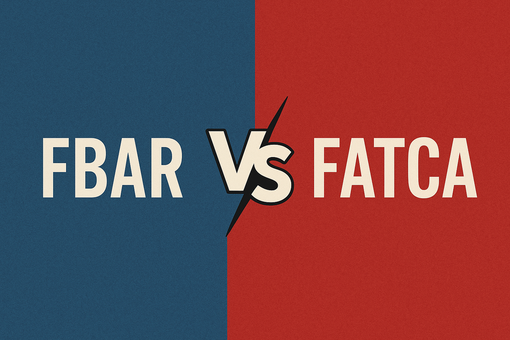How to file taxes as an independent contractor
As an independent contractor, you may enjoy the freedom to set your schedule, work with multiple clients, and be your own boss.
However, with great freedom comes great responsibility – especially when it comes to taxes. Unlike traditional employees, independent contractors are responsible for paying their own taxes, including income tax and self-employment tax.
Let’s break down how to file taxes as an independent contractor and navigate the world of estimated offshore employee taxes, deductions, and the paperwork involved.
What is an independent contractor?
An independent contractor is someone who works for clients or businesses on a contract basis, often without the restrictions of being a full-time employee.
From freelancers, gig workers, and consultants to US contractors working abroad, the key difference is that you control how you perform your work, not the employer.
Independent contractors receive payments without tax withholding and are responsible for paying their own taxes, typically filing a 1099-NEC instead of a W-2.
Whether you’re a freelancer, consultant, or contractor, this guide is to explain how to handle taxes and stay on top of your tax obligations.
Tax obligations for independent contractors
“Taxes are the price we pay for civilized society.” – Oliver Wendell Holmes, Jr., – but with the right strategies, that price doesn’t have to be overwhelming.
If you're an independent contractor, your tax obligations are more complex than those of traditional employees.
You have to account for both self-employment taxes and income taxes.
Here’s what you are to know:
Self-employment taxes
As an independent contractor, you're essentially both employer and employee. That means you're responsible for paying self-employment tax, which covers Social Security and Medicare taxes.
The rate for 2024 is 15.3%, which breaks down as 12.4% for Social Security and 2.9% for Medicare.
Pro tip: You can deduct half of your self-employment tax when calculating your adjusted gross income. While you pay the full 15.3%, you only pay tax on 92.35% of your net income, allowing you to deduct the employer-equivalent portion of those taxes.
Income taxes
Just like regular employees, independent contractors must also pay federal income tax and, where applicable, state and local taxes.
The tax you owe depends on your total income and tax bracket, which is calculated after subtracting deductions and exemptions.
NOTE! You must file your taxes if you earn more than $400 in net income from self-employment during the tax year.
Pro tip: Be sure to report all income, even if you didn’t receive a 1099 form from your clients (this applies if you earned less than $600 from any individual client).
Estimated quarterly tax payments
Since independent contractors don’t have taxes withheld from their payments, the IRS requires you to pay taxes throughout the year in the form of quarterly estimated tax payments.
These payments cover your income tax and self-employment tax.
When are estimated tax payments due?
Estimated tax payments are due on the following dates each year:
- April 15 for income earned from January to March
- June 15 for income earned from April to May
- September 15 for income earned from June to August
- January 15 of the following year for income earned from September to December
Pro tip: To avoid penalties, you should pay at least 90% of your current year’s tax liability or 100% of the previous year’s tax liability, whichever is smaller.
How to calculate your estimated tax payments
You can use Form 1040-ES to calculate your quarterly estimated tax payments.
This form includes a worksheet to help estimate your adjusted gross income, taxable income, and any tax credits or deductions you may qualify for.
You can pay these taxes online through the IRS portal or by mail using the provided vouchers.
Filing taxes as an independent contractor
When tax season rolls around, independent contractors will need to complete and file several forms.
Here are the key documents:
1. Form 1040
Form 1040 is the individual tax return form that all taxpayers, including independent contractors, must file.
This form will report your total income and tax liability.
Form 1040 preview
2. Schedule C (Form 1040)
Schedule C is used to report your profit or loss from business.
This form calculates your net income (or loss) after deducting business-related expenses from your gross earnings. If you have less than $5,000 in expenses, you can use Schedule C-EZ.
Schedule C (Form 1040) preview
3. Schedule SE (Form 1040)
Schedule SE calculates your self-employment tax, which is based on the net income you report on Schedule C.
This form ensures you’re paying your Social Security and Medicare taxes.
Schedule SE (Form 1040) preview
Independent contractor tax deductions
The good news about being an independent contractor is that you can take advantage of several tax deductions to reduce your tax liability.
Here are some of the most common deductions:
Business expenses
You can deduct ordinary and necessary expenses that are related to running your business.
Some examples include:
- Home office deduction: If you use a dedicated space in your home for business, you can deduct a portion of your rent or mortgage, utilities, and other home expenses.
- Travel and mileage: If you drive for business, you can either deduct your actual vehicle expenses or use the standard mileage rate, which is 67 cents per mile in 2024.
- Equipment and supplies: Deduct the cost of computers, software, office supplies, and any other tools you need for your work.
Health insurance premiums
If you pay for your own health insurance, you may be able to deduct the cost of premiums for yourself, your spouse, and your dependents.
Qualified business income deduction
The qualified business income (QBI) deduction allows you to deduct up to 20% of your business income.
This deduction phases out at higher income levels, but it’s a significant tax break for many independent contractors.
Retirement contributions
Contributing to a self-employed retirement plan like a SEP IRA, SIMPLE IRA, or Solo 401(k) can reduce your taxable income while helping you save for retirement.
These contributions are typically tax-deductible.
Drowning in tax details?
Get your free tax consultation
State and local taxes
In addition to federal taxes, don’t forget to account for state and local taxes.
Each state has its own rules for income taxes and quarterly tax payments, so be sure to check with your state’s tax agency to ensure you’re in compliance.
If you’re working as a US contractor abroad, be mindful of your obligations under the Foreign Earned Income Exclusion (FEIE) and Foreign Tax Credit (FTC).
Pro tip: Depending on your circumstances, you may be able to exclude up to $120,000 of foreign-earned income from US taxes or claim a credit for taxes paid to foreign governments. However, you need to meet the physical presence test to qualify for these exclusions.
Final thoughts
Filing taxes as an independent contractor may seem complex, but staying organized and planning ahead can make the process much smoother.
Keep detailed records of your income and expenses, make quarterly payments on time, and take full advantage of tax deductions.
If you’re unsure about the specifics, working with a tax professional can help you navigate the process and minimize your tax liability.



